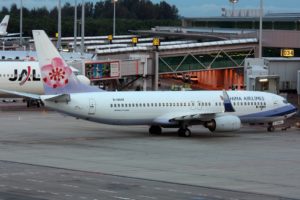 Boeing 737-800 of China Airlines lost cabin pressure on 180 miles northwest of Guam, which activated the emergency indicators and released the oxygen masks. The accident occurred during a flight from Guam to Taipei with 109 passengers and 13 crew. The aircraft returned to Guam and about 40 minutes later successfully landed on runway 06R. The safety inspectors boarded the airplane and initiated special checks and survey to assess the root cause of the loss of cabin pressure. All the people were disembarked and transferred to another replacement Boeing 737-800, which arrived at the destination with 13 hours delay.
Boeing 737-800 of China Airlines lost cabin pressure on 180 miles northwest of Guam, which activated the emergency indicators and released the oxygen masks. The accident occurred during a flight from Guam to Taipei with 109 passengers and 13 crew. The aircraft returned to Guam and about 40 minutes later successfully landed on runway 06R. The safety inspectors boarded the airplane and initiated special checks and survey to assess the root cause of the loss of cabin pressure. All the people were disembarked and transferred to another replacement Boeing 737-800, which arrived at the destination with 13 hours delay.
Fortunately during the incident there were no reported injuries among the crew and passengers, as well as no damages to the plane.
Taiwan Aviation Safety Council initiated investigation for the accident. They estimated that a gear pin of cabin pressure system outflow valve was broken so that the outflow valve could not be controlled which resulted in abnormal cabin pressure.
Boeing 737-800 (registration B-18609) is the third generation derivative of the 737, and follows the 737 Classic. They are short- to medium-range, narrow-body jet airliners. Boeing 737-800 seats 162 passengers in a two-class layout, or 189 in one class. The airplane has length of 39.47 m, wingspan of 35.79 m and wing area of 124.60 sq m.